Geologist Eric Saderholm and venture capitalist Warwick Smith started looking for a mining project to collaborate on two years ago.
The pair had worked together for five years at Western Pacific Resources (TSXV: WRP), which Smith co-founded in 2009, and where Saderholm served as president, before they brought in a financial partner and management team to run the company in 2014.
“It was a great partnership and we think we have different skill sets that match up quite nicely, so we kept in touch over the years,” Smith says of his colleague Saderholm.
After their stint at Western Pacific Resources, Smith took some time off while Saderholm rejoined Newmont Mining (NYSE: NEM) as the major’s exploration manager for the Western United States. He had previously worked for Newmont for 12 years.
When the men learned in mid-2017 that Novo Resources (TSXV: NVO; US-OTC: NSRPF) might option its wholly owned Tuscarora project at the foot of Mount Blitzen — 50 km northwest of Elko, Nev., and 35 km northeast of the Carlin trend — they jumped at the chance.
At the time, Smith recalls, Novo was focused on Western Australia, where it had found gold nuggets on its Karratha gold project and was open to divesting its Nevada asset, while having a 0.5% net smelter return royalty (NSR) on the project.
“Sometimes, timing is your friend,” Smith says. “Things were parabolic for them … they raised more than US$30 million at $5 or $6 a share, and that changes your mindset fairly quickly, and gave us the opportunity to pick it up with discovery holes in it.”
Drilling at Tuscarora by Novo Resources and the project’s previous owner, Newcrest Mining (ASX: NCM), had returned high-grade intercepts, including 2 metres of 368.31 grams gold per tonne within a 5-metre intercept of 127.08 grams gold starting from 151 metres downhole, and 51.06 grams gold over 2 metres from 210 metres downhole in the South Navajo zone. Assays from drilling the East Pediment zone included 52.37 grams gold over 2 metres, starting from 80 metres below surface. “We were thrilled to option the asset,” Smith says. “Surprised, but thrilled.”
The low-sulphidation, epithermal gold prospect is in Nevada’s Tuscarora mining district, 35 km northeast of the Carlin trend; 20 km southwest of the Jerritt Canyon deposit, owned by Jerritt Canyon Gold, a subsidiary of Sprott Mining; and 50 km northeast of Hecla Mining’s (NYSE: HL) Midas deposit.
After optioning the project in November 2017, Smith and Saderholm listed their company, American Pacific Mining (CSE: USGD; US-OTC: USGDF) in March 2018.
Since then, the junior has tripled the property size, and drilled 16 holes in a 3,100-metre, initial drill program of reverse-circulation and core drilling on the South Navajo zone. Assays from the program include 18.40 grams gold over 2 metres starting 201 metres downhole; 16.06 grams gold over 3 metres from 198 metres downhole; and a 9-metre interval of 5.88 grams gold at the bottom of the hole from 195 metres downhole.
“Not a lot of drilling has gone below 200 metres—that’s about the average so far,” Saderholm says of the high-grade vein system. “Drilling has proven that the cross-faults and structural intersections are well mineralized and worthy of further exploration, for what is mostly oxidized mineralization.”
The whole district was found in the late 1860s by the early pioneers and the “forty-niners” from the California gold rush. Production of silver-gold lode deposits began in 1875.
It was a placer district to start off, Saderholm says, so the exact ounces that were mined is difficult to tell, although he estimates it could have been as many as 300,000 oz. gold. At one time the region had three mills and supported a working population of between 5,000 and 10,000 people.
“The placer miners worked their way into the hills and as they did, discovered veins in the rocks and started to exploit them,” he says. “Most of the miners exploited the silver veins, but they started mining gold veins as they moved south toward our project.”
When the veins they were following to the south were offset by faults beneath the gravel, however, they often gave up and went on to the next vein they could find, Saderholm says. “Geologically there is no reason to think these veins go away — they pinched out, but didn’t go away.”
Near the end of the 1900s, mining focused on the low silver and high-grade gold southern part of the district. The Dexter mine, an open-pit north of the Tuscarora project, was mined between 1989 and 1991 by Horizon Gold Corp. and Chevron, and produced 40,000 oz. gold and 250,000 oz. silver.
“The Dexter pit was mined for three years, but it’s a very small pit, and the veins that project through that pit never have been exploited south of the pit,” Saderholm says.
American Pacific Mining plans to do more geophysics — a controlled source, audio magnetotellurics (CSAMT) survey across the property — to get a better sense of what lies beneath the gravel cover, and then it intends to permit and stage a second-phase, 6,000-metre drill program.
“It will help us pick up the vein sets and the faults so that we’re not drilling all over the place,” Saderholm says. “Veins can be tricky because they can be thin, so if you drill all over, there’s a good chance you’ll miss them.”

American Pacific Mining CEO Warwick Smith and president Eric Saderholm (second and third from left) at the Tuscarora gold project in Nevada. Credit: American Pacific Mining.
Saderholm says the strike length of the South Navajo vein alone is 1.6 km long.
“As a geologist you want a challenge, and this is it,” Saderholm says, who adds he turned down an offer from Newmont to head up its exploration program in South America to work on Tuscarora. “It was a big decision … but Newmont is a little big and bureaucratic, and I like the challenges of the junior market. It’s a smaller group of decision makers.”
The geologist, who has worked on many large mines and projects, including Bingham Canyon, Carlin, Midas, Gold Quarry, Twin Creeks, Lone Tree, Mule Canyon, Black Pine, Genesis and Yanacocha, says permitting Tuscarora should be a breeze.
“Elko is a mining-friendly county, so it’s going to be real easy to get additional permitting to drill these holes, and the CSAMT is not destructive — you don’t need a permit for that,” he says. “We got our permit last year in eight days, so things are getting pushed through the system quicker, which is nice.”
American Pacific says it has almost completed its earn-in valued for $375,000 in cash and 800,000 of its common shares.
Under the option agreement it can also buy Novo Resource’s 0.5% NSR for $500,000.
The company is trading at 13¢ within a 52-week range of 4¢ to 41¢. The junior explorer has 32.8 million shares outstanding for a $4.3-million market capitalization.

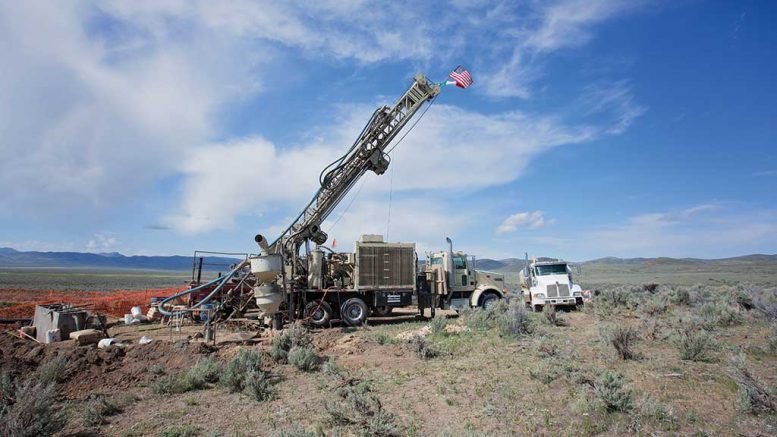
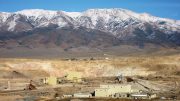
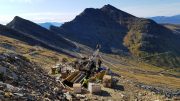
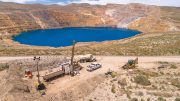
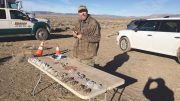
Be the first to comment on "American Pacific grows Tuscarora property near Elko, Nevada"